|
|
|
Sort Order |
|
|
|
Items / Page
|
|
|
|
|
|
|
| Srl | Item |
| 1 |
ID:
137182
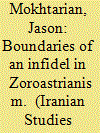

|
|
|
|
|
| Summary/Abstract |
This paper explores the Middle Persian term agdēn, which is often problematically translated as “infidel.” By tracing this term of otherness through Middle Persian texts such as legal cases in The Book of a Thousand Judgments and polemics in the Dēnkard Book III, this article argues that the concept of the infidel frequently appears in discussions about slavery, intermarriage, and conversion to and from Zoroastrianism. Middle Persian legal and theological texts regarding infidels deal with cases in which Zoroastrian interactions with non-Zoroastrians impinge upon Zoroastrian boundaries of identity. Moreover, the term agdēn often refers to Jews, Christians, and Muslims, thereby offering insight into the ties between Zoroastrian self-identity and other groups which the Persian priests encountered. In the end, this paper demonstrates the need for further intensive studies into Middle Persian technical terms of otherness as they lie at the heart of questions of Zoroastrian self-definition and attitudes towards others.
|
|
|
|
|
|
|
|
|
|
|
|
|
|
|
|
| 2 |
ID:
137178
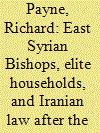

|
|
|
|
|
| Summary/Abstract |
This article is an exploration of the interconnected legal ties between Christians and Zoroastrians in the early Islamic era. Drawing from the writings of the Christian authors Ishobokt, Simeon, and Henanisho, Payne describes how East Syrian bishops appropriated laws of marriage, inheritance, and property from Iranian jurisprudential traditions as a means of transferring wealth intergenerationally and extending their judicial authority. Payne thus explores the ways in which the Christians of Iran were influenced by the Iranian legal system and culture and in the seventh century CE.
|
|
|
|
|
|
|
|
|
|
|
|
|
|
|
|
| 3 |
ID:
137172
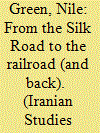

|
|
|
|
|
| Summary/Abstract |
In view of the recent expansion of Indo-Persian studies, the neglect of the Sino-Persian nexus is a missed opportunity to place Iranian history on a larger Asian stage. While Iranian contact with China has continued episodically from antiquity to modernity, scholars have so far focused almost exclusively on the pre-modern phases of exchange. As a contribution to developing the field of Sino-Persian studies, this article situates two twentieth century Iranian travelers to China against the changing background of Chinese–Iranian exchange from the medieval to modern period. In so doing, it demonstrates the infrastructural and conceptual apparatus that enabled the modern Iranian encounter with China while asking how, if at all, twentieth century intellectuals were able to draw on a longer history of interaction to find meanings for Sino-Persian exchange.
|
|
|
|
|
|
|
|
|
|
|
|
|
|
|
|
| 4 |
ID:
137176
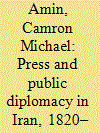

|
|
|
|
|
| Summary/Abstract |
The under-appreciated role of the press as a tool of public diplomacy was rooted in its origins as a Qajar state project in the nineteenth century, but also cultivated by a shared impulse of Iranian journalists and statesmen to represent Iran effectively in the court of world opinion. Moreover, foreign governments often reacted to the Iranian press generally, not just the official newspapers and not just newspapers produced in Iran, as a forum though which to advance or protect their interests in Iran. The Pahlavi state integrated the press as part of a larger state-run mass communication policy in the 1930s that would eventually include new technologies such as radio, and retained public diplomacy as an essential purpose of the media. This study draws upon archival material, press accounts, and memoirs.
|
|
|
|
|
|
|
|
|
|
|
|
|
|
|
|
| 5 |
ID:
137175
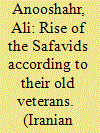

|
|
|
|
|
| Summary/Abstract |
This article studies an early Safavid chronicle, Futuhat-e Shahi by Amini Haravi. In 1521, the founder of the Safavid state, Shah Isma‘il, provided Haravi with a number of veterans from the early days of the Safavid uprising as informants. Their narrative presents an alternative view on the early career of the shah that differs from the dominant version current in modern scholarship. From the perspective of the Futuhat, the rise of the Safavids did not occur as a wild apocalyptic explosion, but was a carefully planned and cautious campaign run by experienced commanders who kept a tight rein on the teenage Shah Isma‘il.
|
|
|
|
|
|
|
|
|
|
|
|
|
|
|
|
|
|
|
|
|